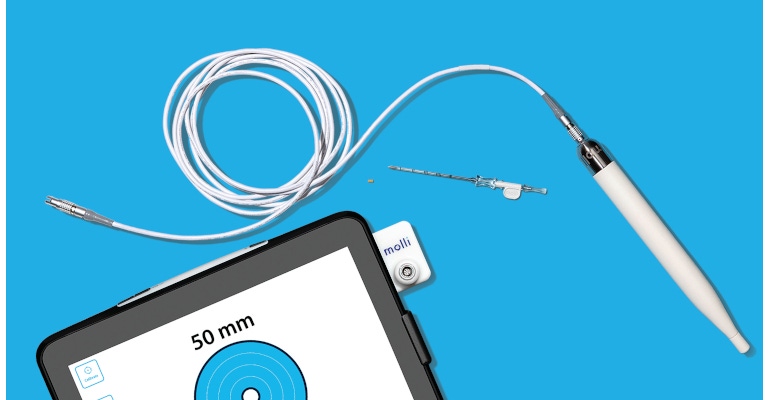Wire-free localization for marking breast cancer lesions offers several benefits. So why isn’t it being used more?

After being introduced in the 1970s, wire-guided localization (WGL) has become the standard in marking breast cancer lesions. However, the method used—inserting one or multiple wires into the breast adjacent to the abnormal tissue—has seen little improvement and innovation since it was first developed. For the past 50 years, care teams, hospitals, and patients have continued to face the same challenges and drawbacks associated with the technique.
The need to coordinate efforts among the patient, radiologist, surgeon, and pathologist creates a significant scheduling obstacle for the people involved, as well as the for hospital. Unforeseen circumstances can have an effect on all downstream activities, which in turn affects the patient experience and adds undue stress to healthcare teams. After the pandemic led to hospitals prioritizing procedures and postponing surgeries, physicians are now struggling to reduce a growing backlog, meaning the pandemic puts patients at risk due to delayed diagnoses and more advanced stages of breast cancer.
WGL has also proven to be challenging and inconvenient for patients. The technique requires the lesion to be identified on the same day as the surgery, which can result in a lengthy day spent waiting at the hospital between the two procedures—a a situation that is far from ideal. The protruding wire also carries the risk of displacement or transection during surgery, which can lead to the potential for inaccuracy and additional procedures, or migration. All of this is happening while the patient is anxious, uncomfortable, and fasting from the night before.
Despite these difficulties, 70 percent of all lumpectomies continue to make use of WGL techniques instead of taking advantage of newer wire-free options, despite the benefits to hospital workflow and the patient experience.
Wire-free localization involves implanting a small marker in the breast that can be detected using a wand and visualization tablet during surgery. The localization procedure takes approximately five minutes, and then the patient is able to leave the hospital and return within 30 days to remove the abnormality.
By decoupling localization from surgery, physicians can optimize their respective workflows to ensure efficient and timely care for patients. Wire-free techniques have been shown to be just as effective as WGL standard technique, with the substantial benefits of being much easier to use and more precise as well as giving flexibility to achieve the cosmetic results patients desire.
In addition to the benefits of better scheduling, the use of markers allows for heightened comfort and convenience for the patient by eliminating the risks posed by a protruding wire. Wire-free techniques also give surgeons expanded options to provide patients with the cosmetic results they desire, through options for the placement of the surgical scar. Wire-free technology also provides the surgeons the flexibility to design their surgical plan to provide the cosmetic outcomes their patients desire.
With new tools earning FDA clearance amid an industry expected to grow by 7.5 percent by 2025, administrators and oncologists are facing a rapidly expanding lesion localization market. It is incumbent upon hospitals and administrators to explore various options to not only improve the effectiveness and efficiency of surgical procedures, but also the experience of patients. Choosing the correct option will depend greatly upon the goals of each provider and their patients, but regardless of the selection, wire-free techniques and their benefits represent the future of better lesion localization and improved breast cancer care.
About the Author(s)
You May Also Like




